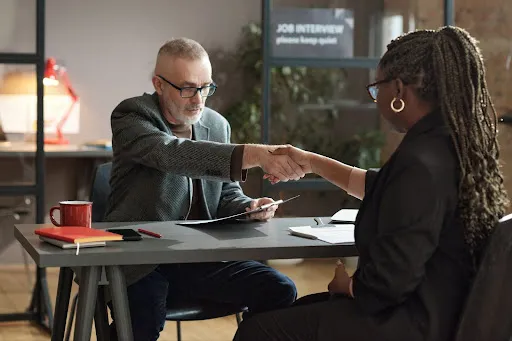How Human Resources Services Keep Your Business Complaint
How Human Resources Services Keep Your Business Complaint Home Blog Running a successful business today involves more than offering great products or services—it also means staying compliant with ever-changing labor laws, tax regulations, and workplace policies. In this environment, human resources services are critical in helping businesses of all sizes remain compliant while minimizing risk and improving workplace culture. Whether you’re a startup navigating employee onboarding or an established company reviewing workplace policies, HR professionals are essential to maintaining regulatory alignment. Human resources services safeguard your business from legal trouble, ensure adherence to best practices, and create systems that promote ethical and efficient operations. Human Resources Services and Legal Compliance To ensure full legal compliance across all areas of employment, human resources services encompass a wide range of strategic functions. These services establish clear guidelines, educate staff, and maintain up-to-date documentation that aligns with regulatory standards. Below are some of the core HR functions that directly support legal compliance in any organization: Policy Development and Implementation HR teams draft and enforce internal policies that align with employment laws, including anti-harassment, leave policies, workplace behavior, and disciplinary procedures. Compliance Training Programs HR provides training sessions for staff and management on compliance topics such as workplace discrimination, harassment prevention, OSHA safety standards, and ethics. Regulatory Monitoring and Updates Human resources services stay informed of changes in labor law, updating company policies, documentation, and practices to reflect current requirements. Recordkeeping and Audit Preparedness HR ensures accurate documentation of employee files, payroll, leave requests, and compliance checklists, which are vital for withstanding audits or legal challenges. Risk Management and Legal Support HR is the first line of defense in resolving employee disputes, responding to claims, and coordinating with legal counsel to prevent or address violations. Human Resources Services That Support Compliance Hiring and onboarding are among the most common areas where compliance issues can arise, particularly when proper procedures aren’t followed. Human resource services ensure that every stage of the recruitment process—from writing job postings to finalizing new hire paperwork—meets applicable labor laws and internal standards. These services include creating non-discriminatory job descriptions, conducting legally compliant interviews, verifying work eligibility through I-9 documentation, managing background checks or drug testing where permitted, and issuing contracts that meet legal requirements. Once hired, employees are onboarded with accurate classification (exempt vs. non-exempt), timely benefits enrollment, and required training on workplace safety, anti-harassment, and company policies. This end-to-end compliance approach reduces legal exposure while supporting a professional, structured hiring experience. Documentation and Recordkeeping in Human Resources Services Proper documentation is one of the most powerful tools for maintaining compliance—and one of the most common areas where businesses fall short. Human resource services are responsible for establishing clear documentation protocols and ensuring that personnel files, payroll records, performance reviews, and disciplinary actions are accurately recorded and securely stored. Accurate documentation protects a business during audits or legal disputes, promotes transparency, supports consistent employee treatment, and provides a reliable historical record for tracking behavior and performance. Without these systems in place, employers risk costly litigation over unverifiable claims. HR teams help mitigate this risk by maintaining all legally required records—such as timesheets, tax forms, OSHA logs, and leave documentation—while using automated tools to ensure timely updates and long-term compliance. Human Resources Services for Wage and Hour Regulations Wage and hour disputes are among the most frequent and costly labor law violations, often leading to class action lawsuits or government investigations. Human resource services are critical in ensuring that all aspects of employee compensation comply with federal and state regulations. This compliance includes correctly classifying employees as exempt or non-exempt, monitoring overtime eligibility and pay structures, ensuring minimum wage compliance across jurisdictions, managing payroll systems for timely payment, and accurately tracking part-time, temporary, or seasonal staff hours. HR also oversees compliance with regulations surrounding paid sick leave, vacation accrual, and other wage-related benefits. When mishandled, these areas can quickly lead to significant financial penalties and legal exposure, making diligent HR oversight essential for avoiding costly mistakes. Workplace Safety and Risk Control With Human Resources Services A safe and healthy work environment is not only a moral obligation—it’s also a legal requirement. Human resources services are essential in coordinating safety protocols, training programs, and injury reporting procedures that align with OSHA standards and industry-specific regulations. Here are key ways HR supports safety compliance: Development of Workplace Safety Programs HR professionals work with management and safety officers to develop customized safety plans that address the specific risks in your work environment. These plans include emergency procedures, injury prevention measures, and safety drills. Employee Training and Certification HR ensures employees are trained on relevant safety procedures and sometimes coordinates mandatory certifications for handling equipment, hazardous materials, or emergency response. Incident Reporting and Investigation If an incident occurs, HR is responsible for maintaining proper reporting protocols, conducting internal investigations, and submitting documentation as required by law. They also work to implement corrective actions to prevent repeat incidents. By embedding compliance into everyday workflows, Human resources services help reduce the risk of workplace accidents, regulatory fines, and potential lawsuits. Human Resources Services for Anti-Discrimination and Equality Creating an inclusive, discrimination-free workplace is not only essential for fostering a positive company culture—it’s also a legal obligation. Human resource services uphold key anti-discrimination laws such as Title VII of the Civil Rights Act, the Americans with Disabilities Act (ADA), and the Age Discrimination in Employment Act (ADEA). These anti-discrimination policies include establishing Equal Employment Opportunity (EEO) policies, investigating complaints of harassment or retaliation, offering diversity, equity, and inclusion (DEI) training, ensuring reasonable accommodations for employees with disabilities, and auditing hiring, promotion, and compensation practices to ensure fairness. By proactively managing these responsibilities, HR helps protect the business from legal risk while promoting a respectful and equitable workplace for all. Human Resources Services for Managing Employee Benefits Employee benefits are a highly regulated area, especially when it comes to healthcare, retirement plans, and leave policies. Human Resources Services ensure that businesses offer and manage benefits in accordance with










